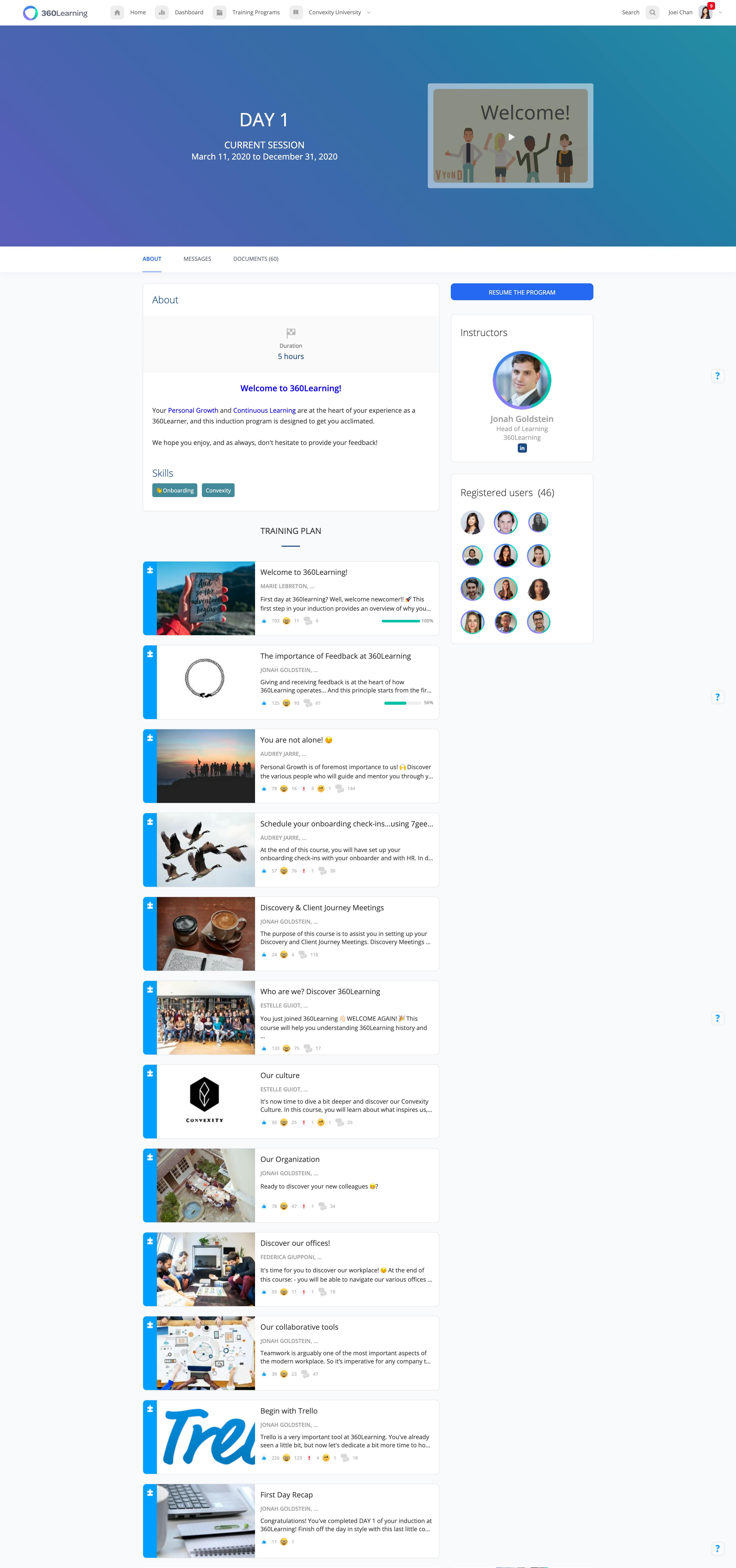You don't get a second chance to make a good first impression.
This is true for a new date, meeting your in-laws, and especially for onboarding new hires. Those first moments count, since 17% of employees quit in their first three months at a new job. After all the time and money you spent recruiting, vetting, and hiring new employees, to let them slip through your fingers in those first 90 days isn’t just frustrating—it’s also a colossal waste of resources.
The words and actions of your company during those first few months are crucial. Amazingly, most companies spend only one solitary week on onboarding. One week for new employees to learn about the organization: its values, philosophy, and tools. One week for employees to understand their role and duties and how they fit in with their team. One week before being thrown into the deep end and expected to perform at the same level as employees who have been there for years.
That’s one busy week. It’s no surprise that only 12% of employees say their organization does a good job at onboarding.
There’s an opportunity here to better prepare employees and make sure they stick around. A comprehensive employee onboarding plan has strong ties to better employee retention, but it’s going to take more than a week to get your new hires confidently up to speed.
Only 12% of employees say their organization does a good job at onboarding.
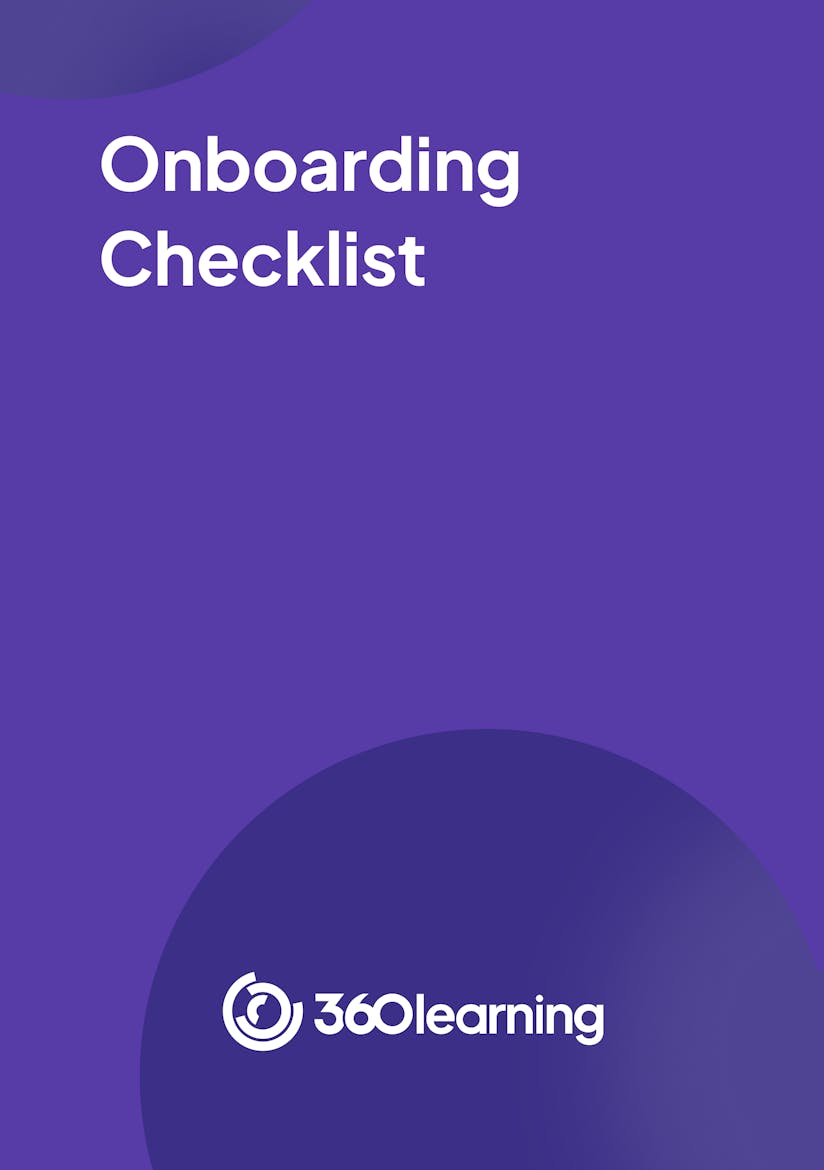
Is your onboarding plan on point?
By providing your contact info, you agree to receive communications from 360Learning. You can opt-out at any time. For details, refer to our Privacy Policy.
At 360Learning, the full onboarding process takes 90 days. How do we spend those 90 days? We’re sharing our process with you in the Onboarding Joei (that’s me!) docu-series and in our new onboarding playbook. We’re also sharing this extended new employee checklist that covers how we use the first three months to introduce everything from our tools to our culture to each employee’s unique role in the company.
We know it works because we have the Peakon numbers to show for it. 3 months after starting work, our new team members report an average engagement score of 9.3 out of 10. They feel committed, engaged, and at home in our company:
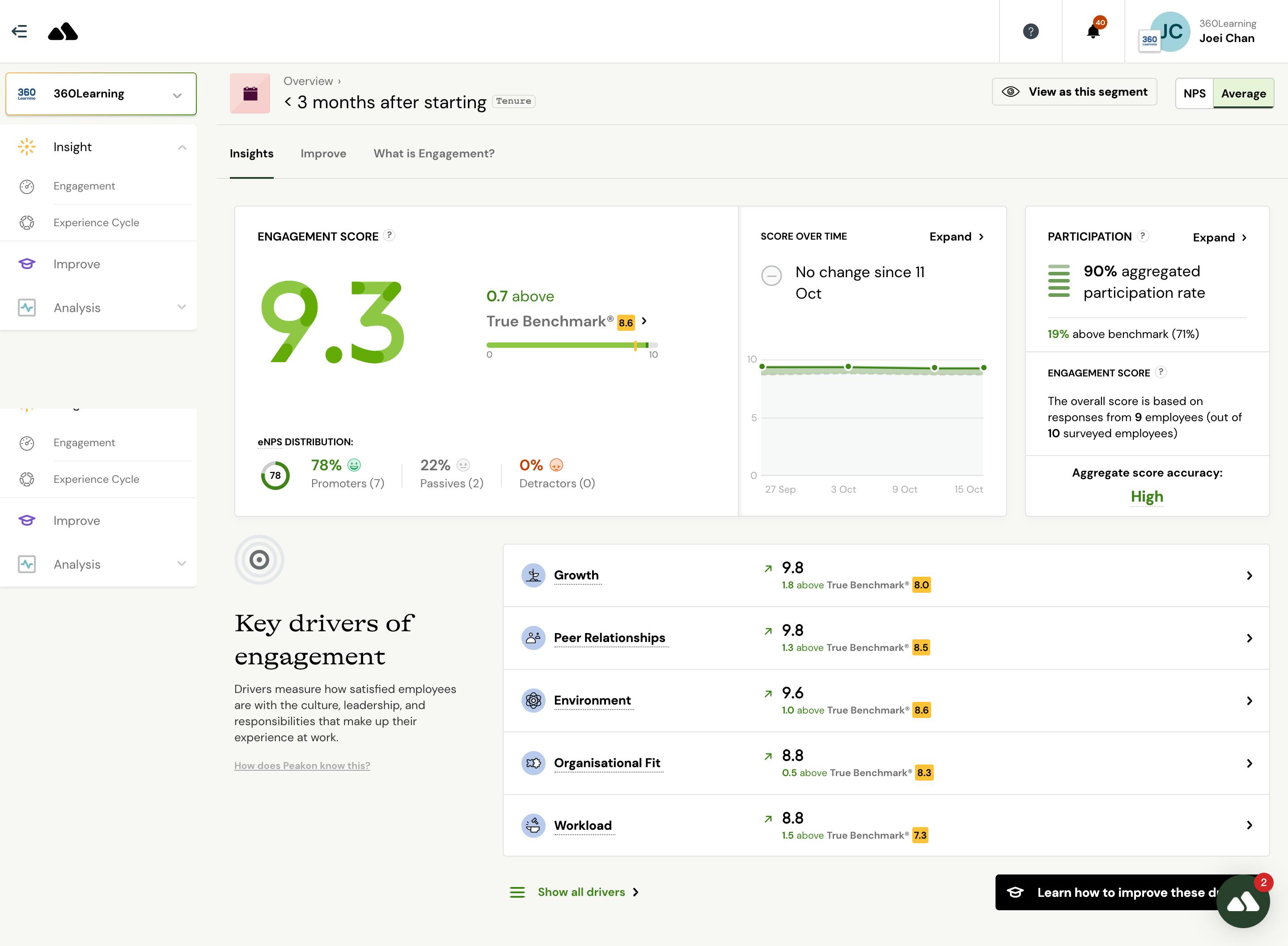
Use our extended new employee checklist to create an extended onboarding experience that helps new employees fully adapt and thrive at your company.
Before the first day: preboarding to hype up new hires
Our new employee checklist starts well before the first day of work. We use preboarding (pre-onboarding) strategies to keep new hires excited and ensure that they have everything they need to get started on day one.
We start by sending new hires a welcome kit with some company swag and a copy of Reinventing Organizations. Remote employees also receive laptops and any other technical equipment they need for their home office. We activate their email accounts so they can start receiving calendar invites and other information.
There is also a series of steps that must be completed internally before the new team member’s first day of work. Dedicated onboarders set up learning materials and unique learning paths based on the new hire’s role; they coordinate meetings with important coworkers, and they make sure all resources are ready to go. We standardize and organize these tasks, for onboarders and new employees, on Trello.
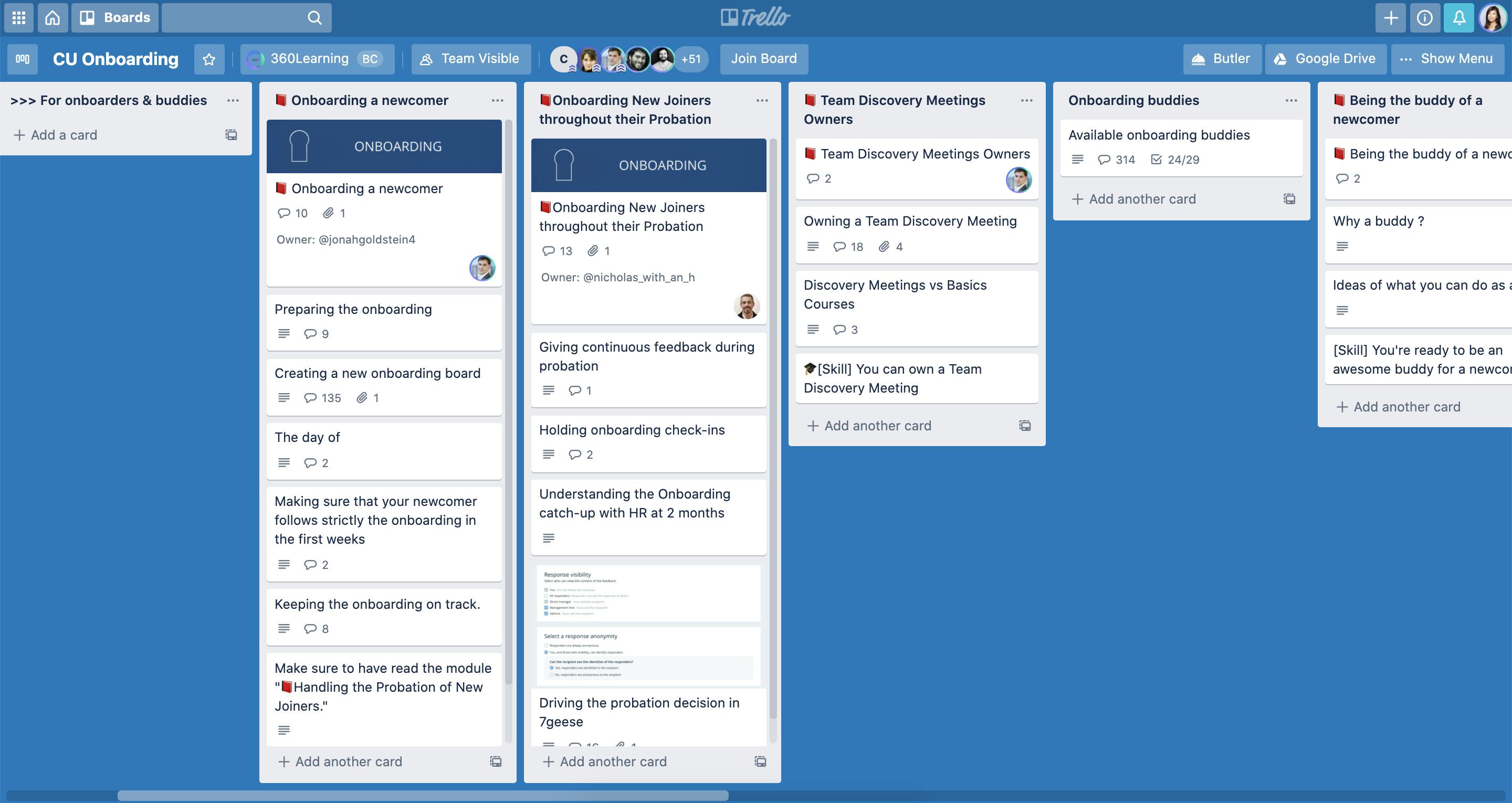
We also appoint an onboarding buddy, a coworker who helps support the new employee during the onboarding process. Onboarding buddies play an important role in boosting the new employee’s confidence, loyalty, and satisfaction. When you’re starting a new job, sometimes you just need a friend.
Checklist
- Prepare welcome materials to send by post
- Send tech materials for remote workers: laptops, phones, or other equipment
- Set up user profiles (for email, communication platforms, learning platforms, and other tools)
- Review learning materials, courses, and resources to be shared with the new hire
- Appoint an onboarding buddy
- Coordinate meetings, and send calendar invites
First day: induction
We dedicate the first day and a half of onboarding to helping our new team members acclimate to the way we work at 360Learning. This is our chance to make an excellent first impression, so we keep the day upbeat and engaging.
Our process here is the same for everyone, from customer support agents right on up to the C-suite. We organize this using Trello and our Collaborative Learning platform. Checklists and nudges keep new hires engaged and on track.
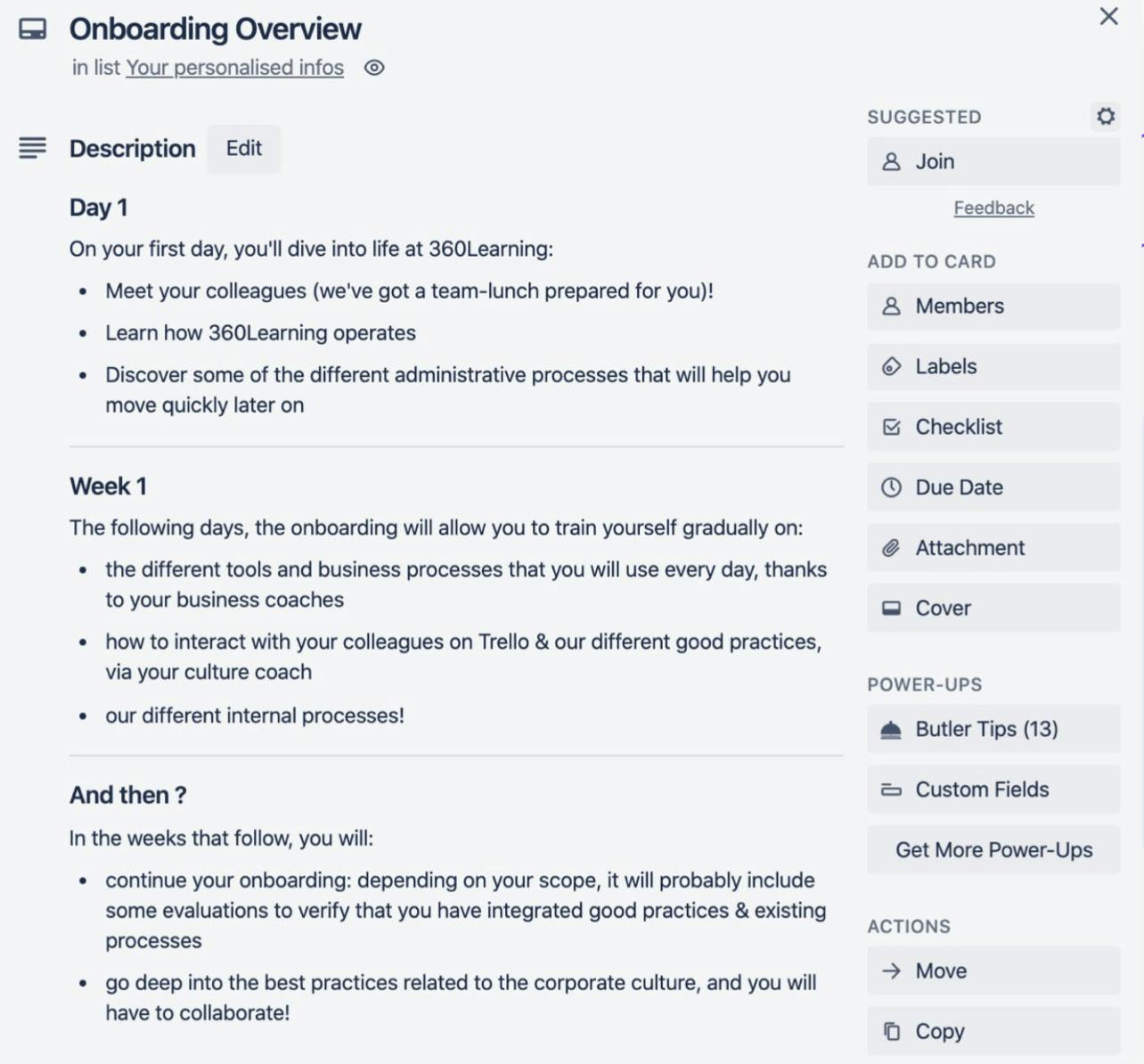
We’re a learning company, so, not surprisingly, learning programs play a massive part in our culture and operations and a large part in our onboarding process.
This first day’s centerpiece is our Day One Learning Courses, a 5-hour program consisting of 12 courses. Here’s a preview of those courses (click to enlarge):
That might sound intense, but this program includes crucial information that employees need to complete the rest of onboarding, including an introduction to our culture and organization, a module on the importance of giving and receiving feedback during the onboarding process, and an introduction to the important tools new hires will need to use, etc.
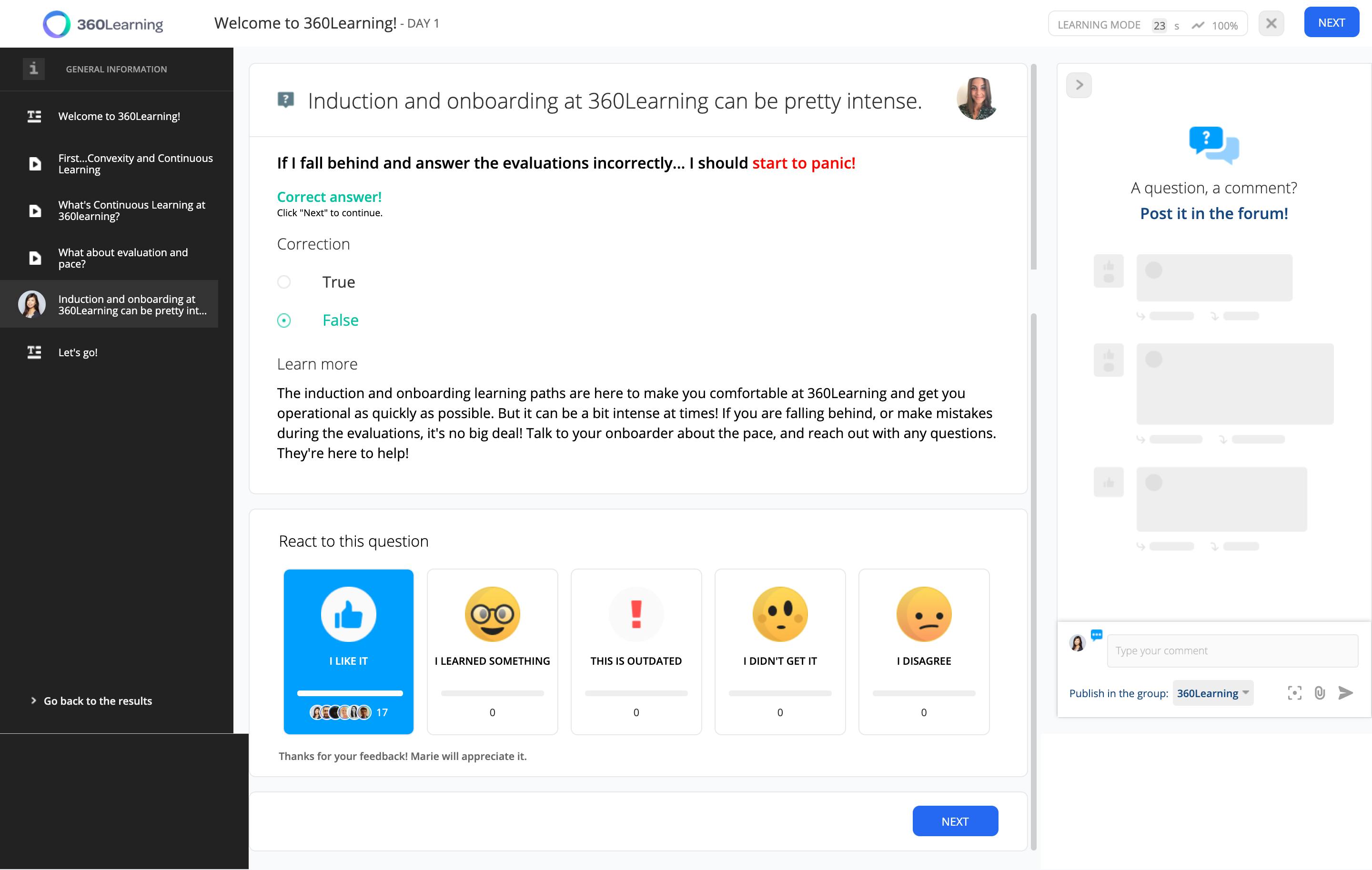
In between learning modules, new employees meet some of their coworkers.
We introduce them to their coach, or what most organizations call a manager; their onboarding buddy; and their onboarder—an educator who oversees the onboarding process. If there is time, in-person employees might squeeze in a welcome lunch with their new team.
It’s a busy first day, but an important one. In the first episode of Onboarding Joei, I called it the most productive first day I’ve ever had.
Checklist:
- Introduction to tools and learning platform (if any)
- Introduction to Day 1 courses
- Introduction to onboarder (onboarding manager)
- Introduction to manager/coach (if different from onboarder)
- Introduction to onboarding buddy
- Team Lunch
First week: role-specific onboarding
Once the new team member finishes their initial onboarding courses, we start moving from general information to more role-specific training.
This week is when new hires begin to understand their responsibilities and connections to other team members and the ways they can add value to the company.
A significant component of this is meeting with key people both on and outside of their immediate team. We set up a series of Discovery Meetings, where the new team member can meet and learn about other departments' work. These meetings are an opportunity to encourage cross-team communication and collaboration from the very beginning.
Throughout week one, new team members meet daily with their onboarder. The onboarder helps guide learning progress and answers questions. They also ask the new team member to provide ongoing feedback on the onboarding process. This feedback helps us to iterate and fine-tune our process continually. This is not just lip service, feedback is so important to us that we actually have a full-on course about how to give and receive feedback as part of our onboarding:
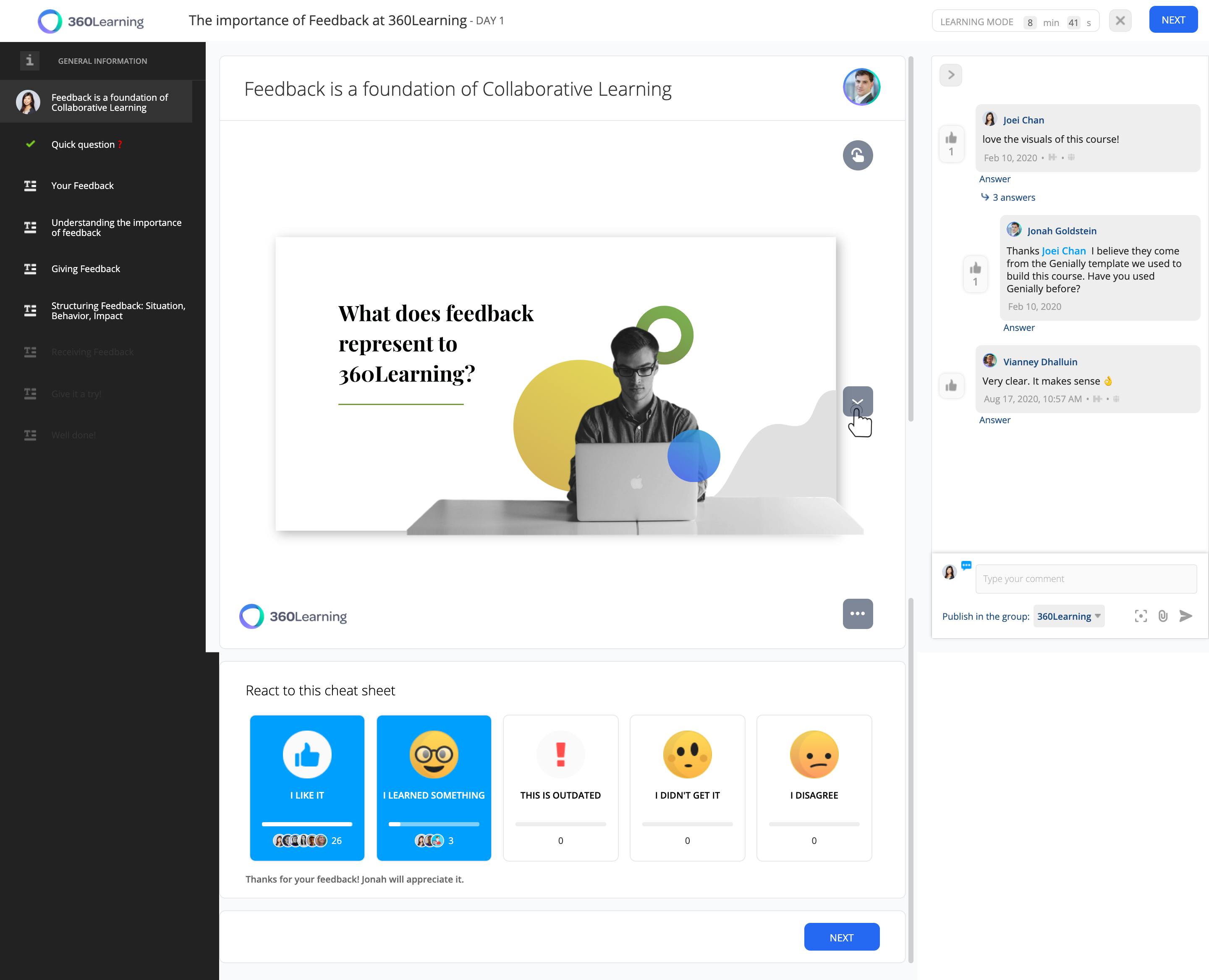
Checklist:
- Daily onboarder check-ins
- Team meeting
- Discovery meetings with representatives from other departments
- Start role-specific training
- Preboarding feedback
- Satisfaction survey on day 3
- Qualitative onboarding survey after week 1
First month: ramping up
While the first week is all about familiarization, we dedicate the rest of the first month to mastering the fundamentals new hires need to handle their core role responsibilities. The goal is to give new hires a better understanding of their role in the organization to add the most overall value.
New team members complete a series of role-specific training courses. Subject-matter experts created each course within their department. Using internal SMEs helps us take advantage of the institutional knowledge and inner wisdom that already exists in our company.
Training varies based on the department. For example, sales onboarding involves courses on product familiarity and compelling sales pitches. New team members engage in digital role-play and spend time shadowing experienced reps. The onboarding process for developers includes courses on the platform's technical aspects, key features, and UX. They round out their training by working with a buddy to run through the platform and train on live projects.
During the first month, new hires start making decisions that will impact their first 90 days and beyond.
First, they take a course on “Discovering OKRs.” They work with their coach to set their own goals and OKRs. Coaches help them break down larger goals into smaller quarterly objectives and key results.
For example, my onboarding goal was to launch this very blog. My quarterly objective was to prepare the launch, and one key result was creating and managing an editorial plan.
Throughout this first month, team members continue to have weekly check-ins with their onboarder. The onboarder makes sure the new hire is sticking to their scheduled onboarding training courses (you can see in Week 2 of Onboarding Joei where I fell behind, and my onboarder firmly encouraged me to get back on track.
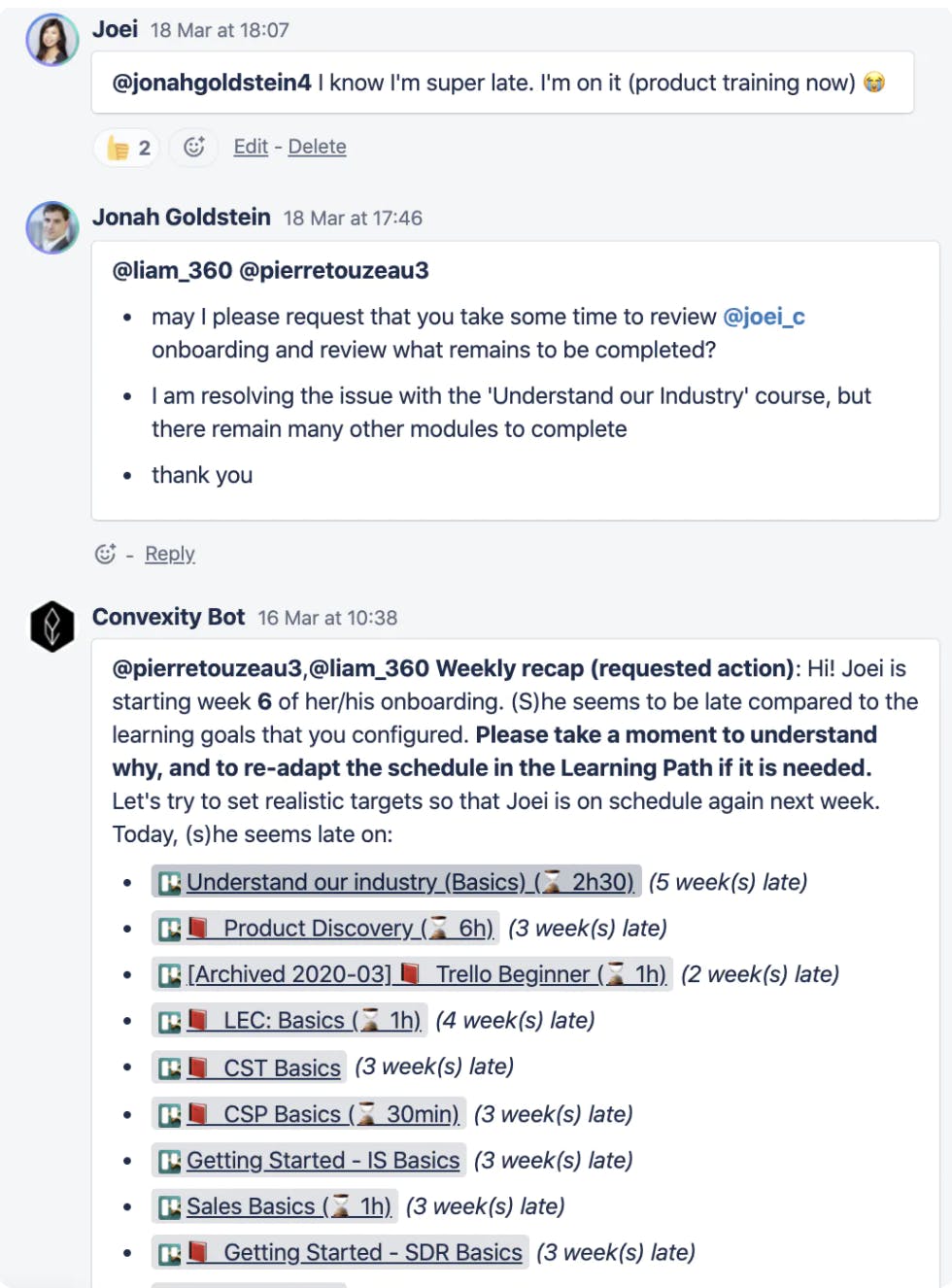
Checklist:
- Weekly onboarder check-ins
- Role-specific courses
- Set personal goals and OKRs
Month two and three: continuing to ramp up
Once new team members have a solid foundational knowledge of the company and their place in it, we shift to a long-term progression model.
The probation period for new hires lasts a full 90 days. We’ve found that to be the perfect amount of time for new hires to gauge their fit in the company and for the company to make sure new hires are living up to expectations.
There is a probation review at the six-week mark to make sure the new hire is on track. Both their coach and their onboarder participate in this review, focusing on big-picture issues: how the new hire fits into the company structure and workflow. You can actually see how my review went in Episode 8 of Onboarding Joei.
We continue to track OKRs and progress of the new hire, and this would be completely different based on their role.
For example, coaches score sales managers on their mastery of pitch, their product demos, and their product familiarity. They need to get at least a four out of five to prove mastery. Once they’ve closed their first deal, we consider them fully ramped up.
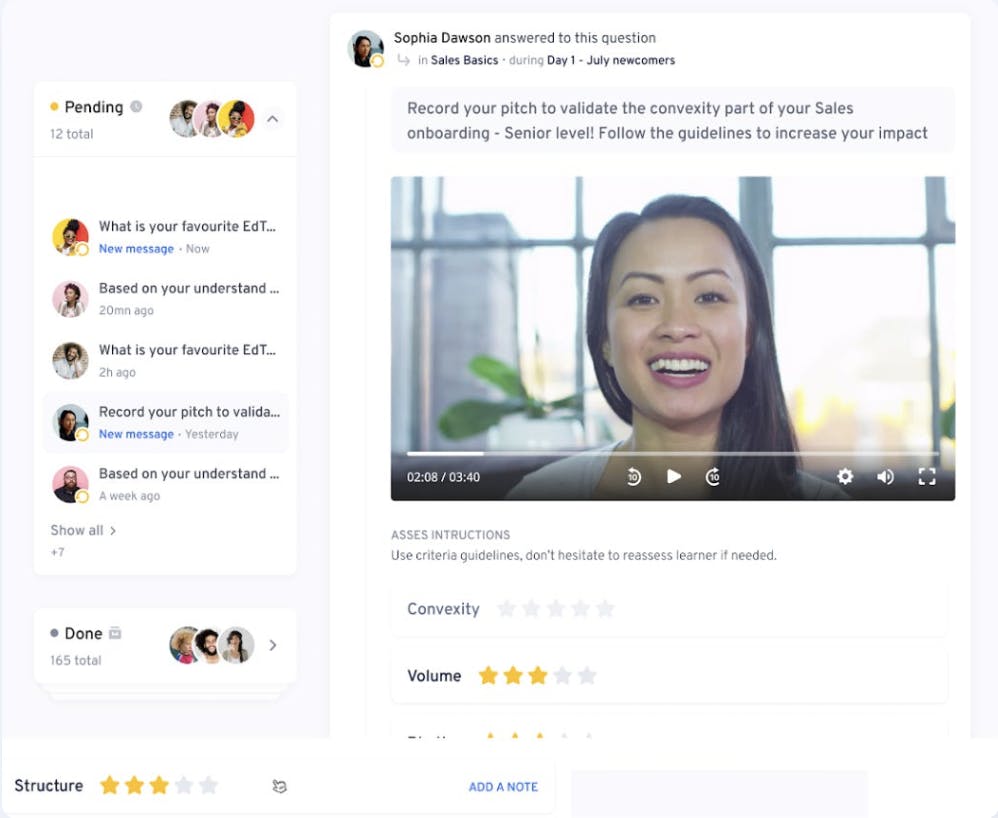
Months two and three of the onboarding process are more flexible. We make changes based on the new hire’s performance, on their role, and on broader company factors.
For example, in Week 5 of my onboarding, France locked down due to COVID-19, and our company suddenly went fully remote. As the company pivoted, so did the onboarding process. Every department reassessed their budgets and projects, and I shifted what I was working on to support new initiatives.
Checklist:
- Monthly onboarder check-in
- 6-week probation review with manager
- Weekly OKRs check-ins
- Complete role mastery metrics (based on role)
- Social events with team
End of month three: evaluation and continual learning
After a full 90 days, new hires should have a thorough understanding of the company and its culture, their role, and mission. At this point, we evaluate the employee’s progress and decide their future with the company.
The 90-day evaluation is the chance to assess the new team member’s performance and cultural fit. To do this, we collect 360-degree feedback from different teammates. (I had 10 peer reviewers!) We ask them to tell us what the new hire excels at and what they need to improve on. We ask if, knowing what they know now, they would still offer a job to the new hire.
This is a snapshot of the results from my actual peer review—luckily, nobody veto-ed me out:

We also evaluate whether the employee in question met their OKRs. This isn’t a pass/fail proposition. We’re mainly trying to determine whether they are doing the job we hired them to do. Mine looked like this:
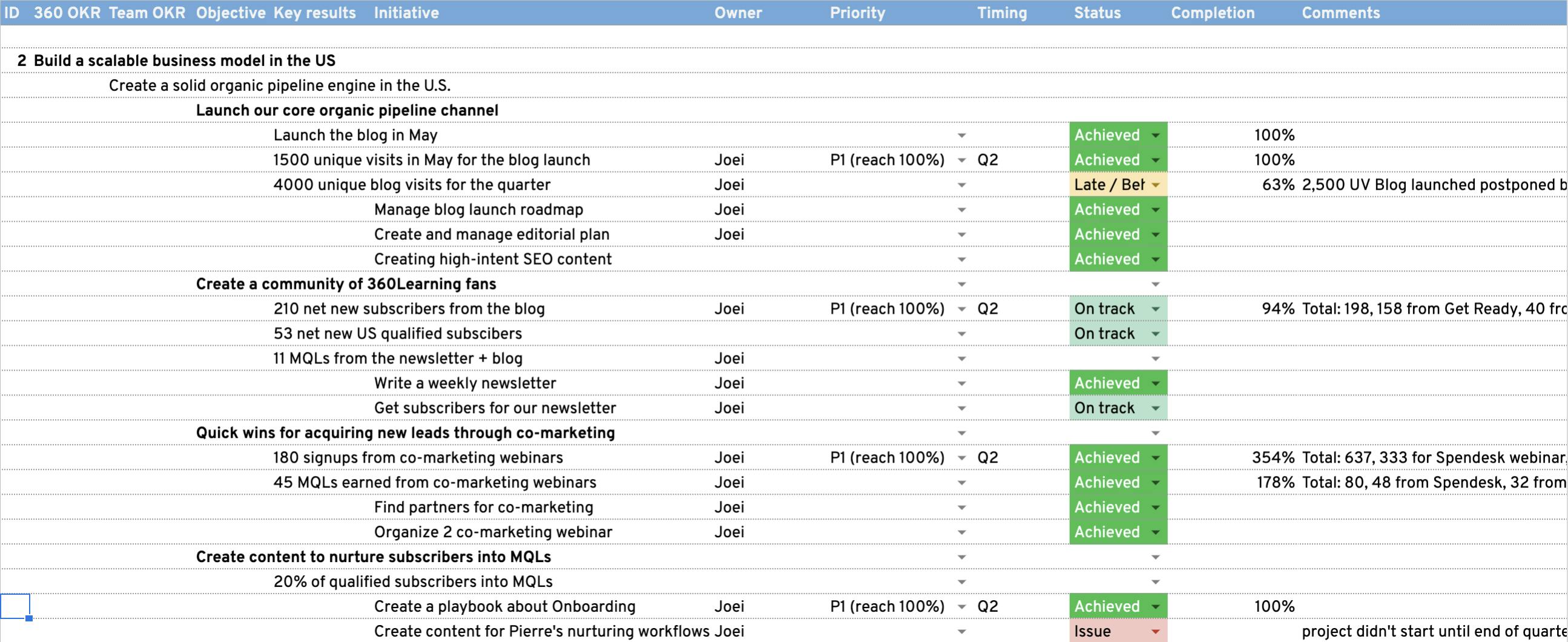
At the end of the evaluation, the candidate will be hired “officially” or let go, or their probation might be extended to give them more time to prove themselves. You can see my probation review in Weeks 12 and 13 of Onboarding Joei (spoiler alert: I’m still here!)
Checklist:
- Peer evaluation
- 90-day probation review with manager
- OKRs evaluation
- Collect more feedback on the onboarding process
- Set new OKRs
Use your new employee checklist to increase new-hire retention
Onboarding may be over, but the learning journey isn’t. If the team member decides to stay with the company, they can expect a continuous learning experience throughout their career. Being hired is not the end—it’s only the beginning.
Our onboarding is definitely expansive, but by the end of the 90-day period, employees are fully integrated into our company culture, procedures, and expectations. If you use your new-hire checklist to give employee’s the confidence and knowledge they need to be good at their jobs, they will be far more likely to stick around.
Want to learn more about our onboarding process? We made a 13-week docu-series all about it.
(And if you’re looking for more of a step-by-step guide, don’t miss the Onboarding Playbook we swear by.)
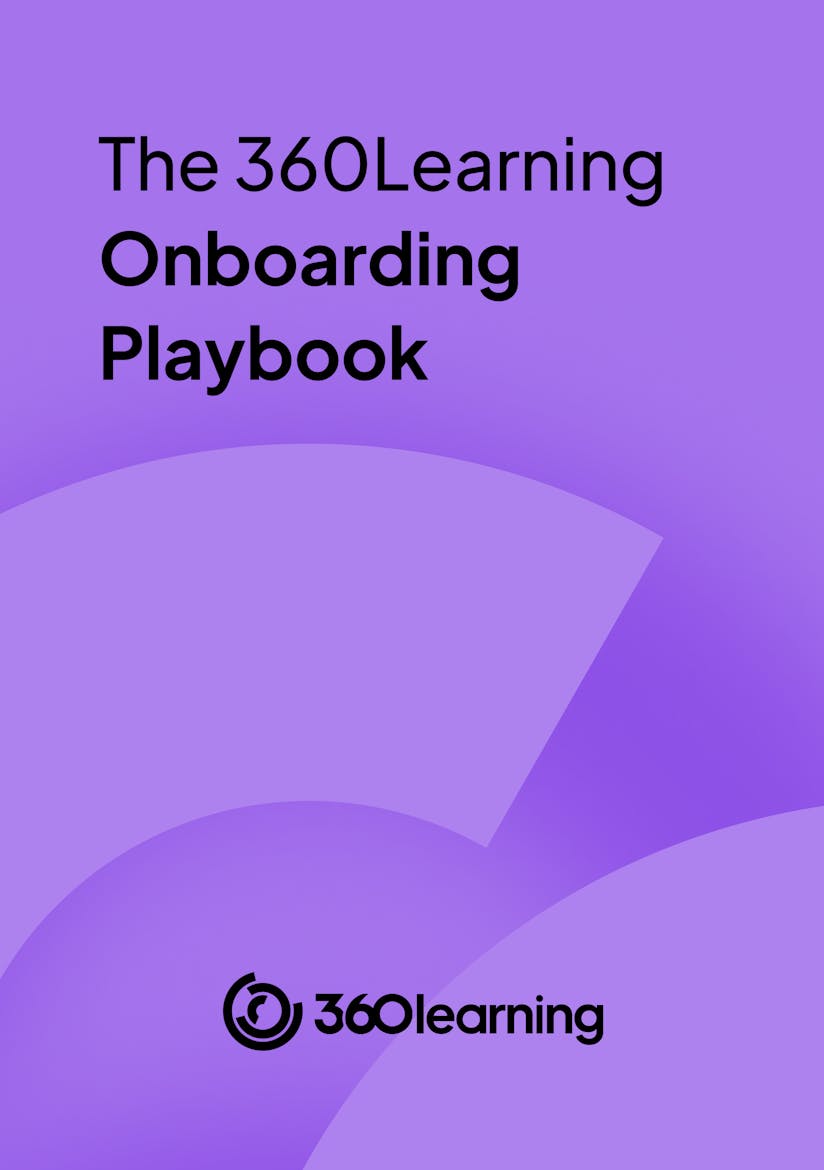
The Onboarding Playbook we swear by
By providing your contact info, you agree to receive communications from 360Learning. You can opt-out at any time. For details, refer to our Privacy Policy.


